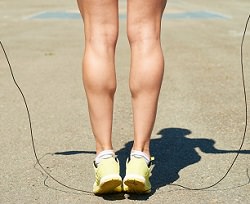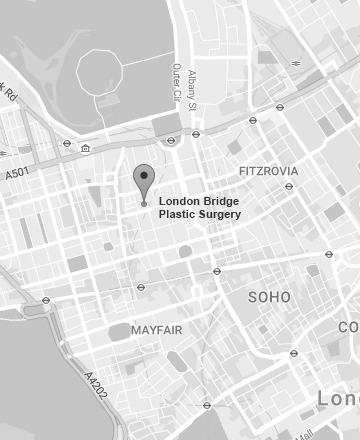Calf Implants Give You Fitter and Stronger-Looking Calves

Have you been wishing you had more toned and muscular calves? Anyone who is unhappy with the lackluster appearance of their calves can get them enhanced with the help of calf implants.
Calf augmentation is a cosmetic procedure that involves surgical placement of a silicone implant into the calf in order to enhance its size, shape, and definition. In some cases, fat grafting can be used instead of implants or in addition to them.
The Calf-Augmentation Consultation
As with all procedures, calf augmentation requires a consultation with a skilled medical professional before a date can be set for the operation. When you meet with a doctor at London Bridge Plastic Surgery, they will help you better understand the details of calf augmentation, including preparation and recovery instructions.
During this consultation, the doctor perform an examination and ask you about your aesthetic goals for the procedure. The two of you will discuss your complete medical history, which will need to include any medications or supplements you are currently taking. A surgical plan will then be created and a procedure date will be set.
Before your procedure, you will need to be in good health. You will need to stop taking any blood thinners beforehand in order to avoid the risk of complications. You will also need to quit smoking prior to undergoing the treatment. Smoking affects the health of the skin, which leads to an increased chance of complications and makes the recovery process take longer.
The Details of the Calf-Augmentation Procedure
Calf augmentation is quite simple and is carried out as an outpatient procedure. This means that the patient can return home on the same day instead of having to spend the night in recovery at the hospital.
The calf-enhancement surgery time varies depending on the exact techniques used. When silicone implants are used, it takes an hour to complete. When fat grafting is used, it can take two to three hours.
General anaesthesia is first given to the patient in order to make the procedure more comfortable and help to avoid any pain or discomfort during it.
For implant-based augmentation, the surgeon makes an incision in the area behind the knee. The area where the incision is to be made is marked before the start of the surgery. The implant is then placed into the calf area above the muscle and positioned appropriately. Finally, the incision is sutured closed.
For fat-grafting calf augmentation, fat is first harvested from the patient’s trouble areas (like the back and abdomen). This fat is then purified. Finally, it is carefully injected into the calf in key areas in order to provide natural fullness.
After the calf-augmentation procedure is complete, the surgeon bandages the calf area and then monitors the patient’s health for a time before sending them home.
Recovery and Results
The bandages should be in place on the calf for around a couple of weeks. Medications to relieve pain are prescribed, and the patient will need to arrange follow-up visits to the doctor for removal of the bandages. These visits will also provide the doctor with a chance to evaluate the patient’s recovery progress.
For the first two weeks, the patient must avoid any kind of exercise and try to rest the feet as much as possible. Sufficient intake of water and a balanced diet are very important for a smooth and quick recovery. Once the swelling and bruising in the area subside and the healing is complete, the results of the surgery start to become apparent.
The procedure offers long-lasting benefits. It is important to remember that the implant that is inserted can degrade over a period of time and may need to be replaced.
Schedule Your Consultation
To give your calves the look and shape you’ve been wishing for, contact London Bridge Plastic Surgery today and set up your consultation. We provide high-quality care and results you can be proud of.







